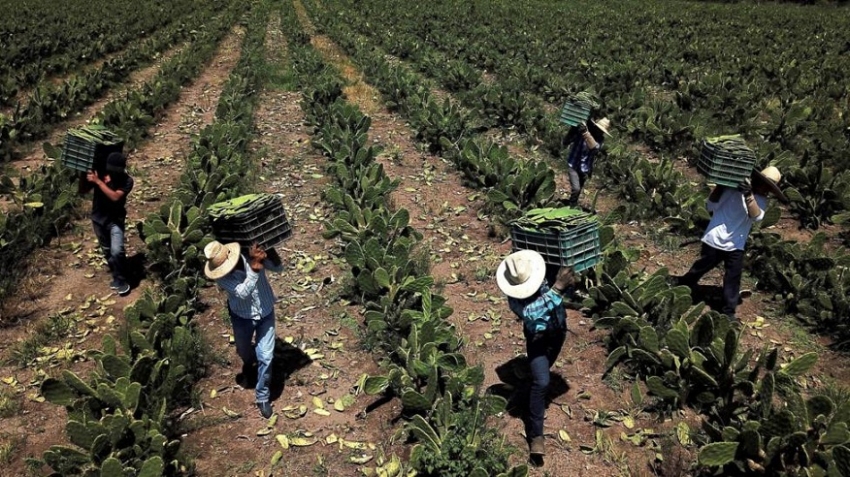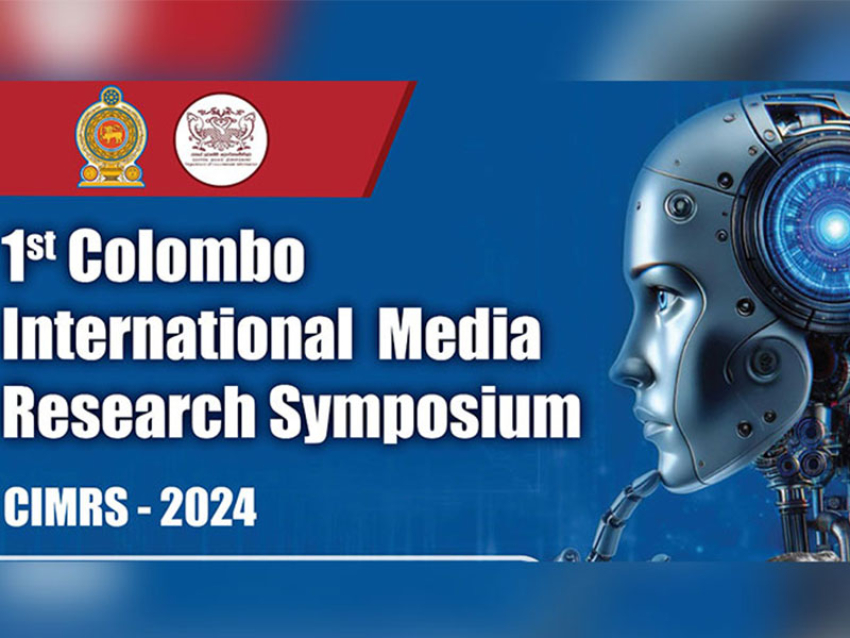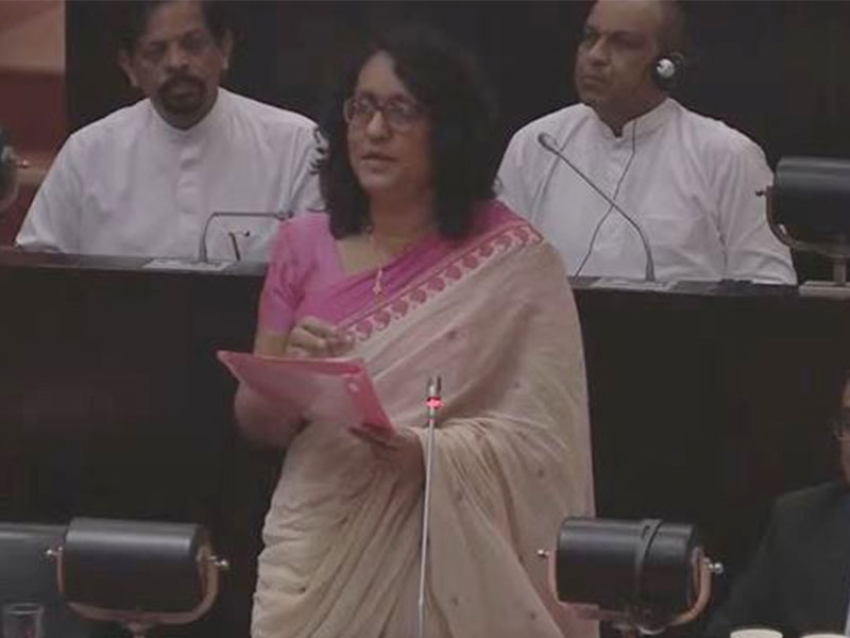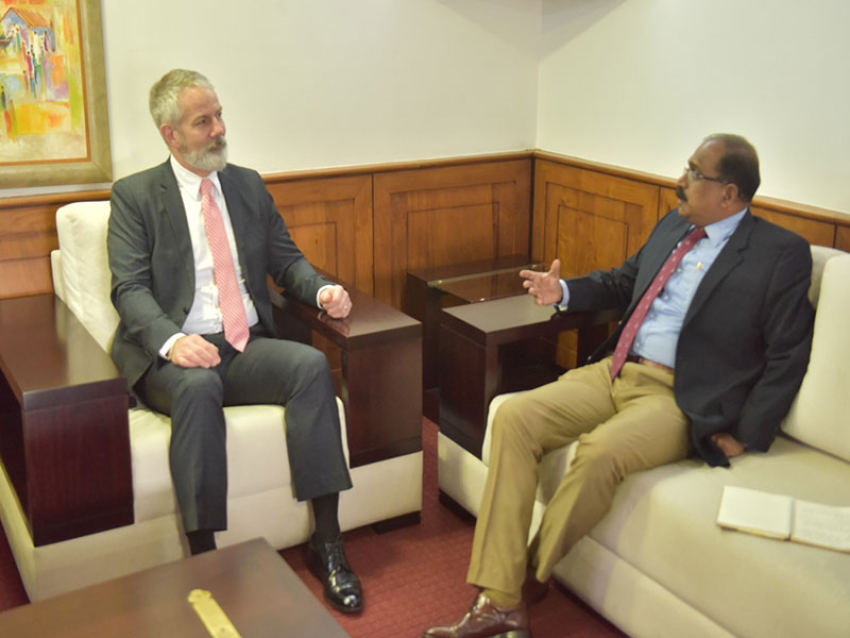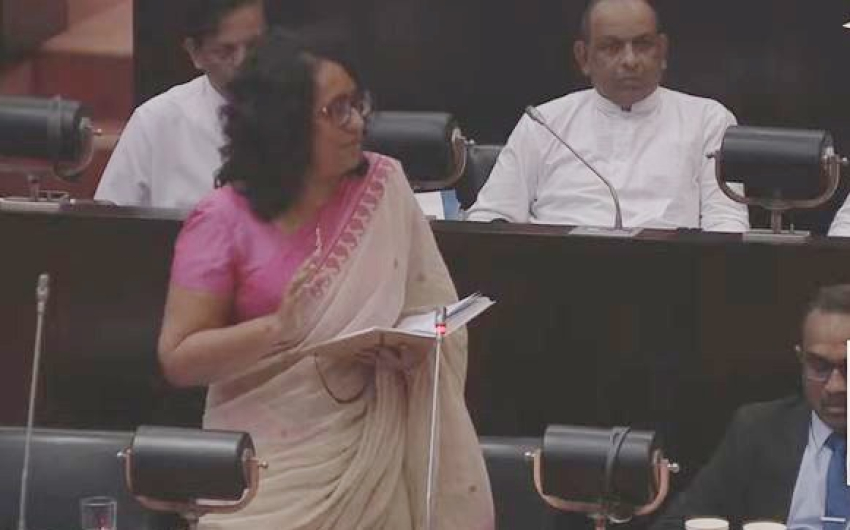"Green" alternatives to throwaway plastics don’t always break down in sea water. But could they help to fix our food waste problem?
Author image
Throwaway plastic has found its way into almost every aspect of our lives: from the disposable coffee cup you pick up on the way to work or the straw in your smoothie, to the hidden fibres woven into wet wipes and tiny glittering fragments in make-up.
Of the 6.3 billion tonnes of plastic we’ve thrown away since we started mass-producing it in the 1950s, just 600 million tonnes has been recycled – and 4.9 billion tonnes has been sent to landfill or left in the natural environment.
While awareness of the detrimental impact plastic can have on the environment has exploded in recent years, environmentally friendly alternatives are only now picking up steam. As single-use plastics bans come in around the world – next year in the UK, and by 2021 in Canada – new materials are going to become ever more important. But are they all they’re cracked up to be?
You might also like:
What would happen if all the world’s trees disappeared?
The desert soil that could save lives
The fight to bring a deadly illegal industry to justice
Biodegradable plastics are one set of materials that are becoming a popular replacement as consumers demand green alternatives. Rather than remaining stable for hundreds of years – the quality for which we prized plastic when we first began using it – biodegradable plastics can be broken down by microbes, chewed up and turned into biomass, water and carbon dioxide (or in the absence of oxygen, methane rather than CO2).
A subset of them are compostable, which means that not only are they broken down by microbes, but they can be turned – alongside food and other organic waste – into compost. Only a minority of these plastics are home compostable, so, the label “compostable” most often means industrially compostable. That coffee cup with a Seedling logo you’re drinking from won’t decompose very quickly, if at all, on your home compost heap, but will break down inside the right kind of industrial equipment.
Compostable waste recycling plant in Suffolk, UK (Credit: Getty Images)
Sites like this for recycling compostable waste are capable of processing more bioplastics than you would be able to compost at home (Credit: Getty Images)
There’s a European standard for compostable packaging: EN 13432. It requires that the packaging break down under industrial-scale composting conditions within 12 weeks, leaving no more than 10% of the original material in pieces bigger than 2mm, and doing no harm to the soil itself through heavy metals or worsening its structure.
Most biodegradable and compostable plastics are bioplastics, made from plants rather than fossil fuels and depending on the application you need them for, there are plenty to choose from. Izabela Radecka, a professor of biotechnology at the University of Wolverhampton, and her colleagues are making a kind of bioplastic called polyhydroxyalkanoates (PHAs). Or rather, they’re getting microbes to do the production for them. “When they are under stress those microbes will produce granules inside the cells, and those granules are biopolymers,” she says. “When you extract them from the cell they present very good properties, similar to synthetic plastics, but they are fully biodegradable.”
She started off feeding waste cooking oil to the microbes to make PHAs, but in recent years has been investigating how waste plastics like polystyrene can be turned into new, biodegradable kinds of plastic. That’s preferable to using freshly grown crops as a source material, because it spares plants that could instead be used for food, at the same time as using up waste plastic.
At the moment, PHAs make up around 5% of biodegradable plastics worldwide. Around half of biodegradable plastics are starch-blends. Polylactic acid (PLA), typically used in compostable coffee cups and lids, makes up another quarter.
A biomaterial that engineers say dissolves upon contact with water (Credit: Getty Images)
A biodegradable material that engineers claim dissolves 100% upon contact with water is unveiled at a technology summit in Chile (Credit: Claudio Reyes/AFP/Getty Images)
But while most of these bioplastics require industrial composters to break them down after use, they are far from guaranteed to make it to one. Given humanity’s track record, it makes sense to ask what happens if they end up where they shouldn’t.
The problem with labels
To test how different kinds of plastic bag fare in different environments, Imogen Napper at the University of Plymouth collected carrier bags with various claims about biodegradability, and put them in three different natural environments over a period of three years: buried in soil, left in the sea, and hung up in the open air. She tested bags labelled as biodegradable, compostable, and oxo-biodegradable, as well as conventional high density polyethylene (HDPE) bags. (The European Commission has recently recommended a ban on oxo-biodegradable plastics, because of fears that they break down into microplastics.)
In Napper’s experiment, the bag labelled “compostable” (which stated it adhered to standard EN 13432) disappeared entirely within three months when it was left in seawater. In soil it remained intact for two years, but disintegrated when the researchers loaded it with shopping. The rest of the bags – including the one labelled “biodegradable” – were still present in both soil and sea water after three years, and could even hold shopping.
After nine months in the open air, all of the bags had disintegrated or were beginning to come apart, mostly breaking down into microplastics. That’s because sunlight helps break down plastics through a process called photo-oxidation, in which the plastic becomes weathered and brittle, eventually fragmenting rather than breaking down to its organic components.
“That doesn't actually mean it's breaking down into its most natural counterparts of carbon and hydrogen, it just means they're becoming smaller pieces,” says Napper. “Which you could argue is more problematic because you can't clean up – it's like trying to pick up Smarties with chopsticks.”
When plastics break down in the sea they become microplastics (Credit: Getty Images)
When plastics break down in the sea they become microplastics – which Napper argues is more problematic (Credit: Getty Images)
Of course, even the compostable bag tested in Napper’s experiment is not designed to break down in the sea or in soil. But she says that the fact that these plastics have to be industrially composted is not adequately explained on the bags themselves, leaving consumers guessing about what the bags can and can’t do – and, crucially, what they should do with them once they’re finished.
“People need to be aware that putting it in the recycling or trying to compost it, or putting in the general waste bin won't necessarily get them the results that they're being advertised,” says Napper.
One company investigating how its own products break down in a marine environment is Novamont, producer of Mater-Bi – a starch-based plastic used in the compostable carrier bags launched by the Co-op this year. A report released by the company and conducted in partnership with Hydra, a German marine research institute, and the University of Siena, Italy, says that the product fully biodegrades in seawater on a timescale of between four months and a year, leaving no toxic residues.
But Francesco Delgi Inoccenti, who looks after the ecology of Novamont’s products, says the company doesn’t have any plans to advertise these characteristics where it sells plastics, because it doesn’t want to encourage littering. Rather, the tests are an insurance policy in case their products end up somewhere they shouldn’t. “It’s not going to be a commercial claim, because people could really misunderstand the meaning of that,” he says.
Bioplastics might not solve our marine plastic pollution problem, but they are well suited to tackling another big environmental problem: food waste
While thin compostable plastics like carrier bags might break down in the ocean, the thicker and more robust PLA used to line coffee cups and make cup lids, clear plastic tumblers, drinking straws, and other food packaging is expected to act like traditional plastic in seawater, and won’t break down at all. So, are companies switching to biodegradable plastics that might not break down in the sea ‘greenwashing’? Not necessarily. These plastics might not solve our marine plastic pollution problem, but they are well suited to tackling another big environmental problem: food waste.
Cleaning up our act
The biggest potential area of impact for compostable plastics is in food service. From coffee cups to sandwich packaging to takeaway containers, putting food in compostable plastics means that – in an ideal world, at least – the plastic and any food waste still stuck to it can be composted together. It’s a triple win: reducing the amount of plastic being sent to landfill, preventing recycling from being contaminated with food, and at the same time making sure food waste is returned to the soil, not left to rot in landfill where it will release methane.
Farm workers in Mexico harvest white nopal (Credit: Getty Images)
Farm workers in Mexico harvest white nopal, the juice from which can be used to manufacture bioplastics (Credit: Getty Images)
David Newman, managing director at the Bio-based and Biodegradable Industries Association (BBIA), says that he’d ideally like to see everything from tea bags to fruit stickers to condiment sachets have to be compostable by law, so that much more of our leftover food and the plastic it comes with can be processed at the same time. By reducing the amount of traditional plastics that contaminate food waste, we can at least ensure that some of that wasted food is eventually used as compost, rather than ending up in landfill or incineration.
There are some other applications suited to biodegradables, too.
Traditionally farmers have used polyethylene mulch sheets over crops to prevent weeds growing and to conserve water, with around half of this plastic ending up in landfill after it’s used. But since 2018, a new European biodegradability standard for these mulches means that farmers can buy plastic that they can plough back into the field safe in the knowledge that it will break down and not harm the soil.
Industry, too, is beginning to use bio-lubricants used to keep machines running smoothly rather than fossil fuel-based ones. “They're increasingly made from plant-based sources,” says Newman. “
If they spill, and all machine oils eventually spill, then they will not damage the environment.”
A load of compostables are going to end up incinerated, and a lot of plastics are going to end up in composting plants, it's just the way it is for the next two years or three years – David Newman
But while mulches and oils might break down in the environment, we know most food packaging does not. So how do we make sure compostable packaging is actually composted?
Demystifying the process
First, we need to fix the plastic’s image problem. Newman says that message shouldn’t be, “We're going to stop plastic pollution by using compostables,” but rather, “We're going to help the quality of soil for sustainability in the long term improve by using compostables,” he says. “Oh, by the way, we may reduce some plastic packaging as well.”
But he admits industry needs to demystify how compostables should be treated in order for this to work.
A clearer labelling system, similar to the way recyclability is marked on food packaging, is in the works, but it will take a few years to be implemented, he says. “In the meantime, it's clear that a load of compostables are going to end up incinerated, and a lot of plastics are going to end up in composting plants, it's just the way it is for the next two years or three years.”
Bioplastic cutlery on the production line (Credit: Getty Images)
Bioplastic cutlery, like these, often end up in landfill when councils do not have the capability of processing them (Credit: Getty Images)
At the moment, the UK’s waste system isn’t set up to handle compostables, at least at the household level. Though in-vessel composting facilities exist that could process compostable cutlery, coffee cups and more, councils don’t collect these items, so consumers are left with no option but to put them in the general waste where they’ll head to landfill or incineration. Some local authorities take compostable carrier bags if they’re used to collect food waste, but at some plants those bags are removed from the food waste before it’s composted.
Closed-loop schemes with a dedicated collection for compostable plastics, like the one launched with Vegware in the UK Parliament last year, offer some hope. But even they run into problems: an investigation published by Footprint in July this year revealed that in its first seven months, Parliament’s scheme had to send all of its compostable plastic to be incinerated, largely because of high levels of contamination.
It’s a problem worth cracking. If we do figure out how to properly process them, compostable plastics could lend a helping hand when it comes to traditional plastic recycling too.
Separating out food waste and associated compostable packaging into a different waste stream would mean the remaining recycling is kept away from coffee dregs, tea bags and other contaminants. “When you've got your food mixed up with everything, as we have in [the UK], everything is difficult to recycle,” says Newman.
Progress made by countries like Italy – where single-use bags for produce and baked goods must be compostable, and can be recycled as part of widespread food waste collections – shows that solutions to some of our plastic problems are there for the taking. “If you get your food waste done properly, as they have in several countries, everything else becomes easier to recycle,” says Newman. The challenge is to get all of the pieces of the puzzle to slot into place.
--
Join one million Future fans by liking us on Facebook, or follow us on Twitter or Instagram.
If you liked this story, sign up for the weekly bbc.com features newsletter, called “The Essential List”. A handpicked selection of stories from BBC Future, Culture, Worklife, and Travel, delivered to your inbox every Friday.
Share on Facebook
Share on Twitter
Share on Linkedin
Share using Email
Open share tools
Like us on Facebook
Follow us on Twitter
Follow us on Instagram
Sign up to our newsletter
SIMILAR ARTICLES
(Credit: Getty Images)
How fish change the landscape
Should man-eating tigers be killed?
Why people are dying for sand
The hunt for Japan’s ‘ghost’ wolves
YOU'RE READING
How salmon can transform a landscape
ENVIRONMENT
(Credit: Getty Images)
Share on Facebook
Share on Twitter
Share on Linkedin
Share using Email
Open share tools
SIMILAR ARTICLES
Should man-eating tigers be killed?
Why people are dying for sand
The hunt for Japan’s ‘ghost’ wolves
The frozen ship drifting to the Pole
Protecting salmon in coastal Canada could have benefits that extend beyond the water they swim in and can have profound impacts on the surrounding landscape.
Author image
By Lesley Evans Ogden
29th November 2019
S
Skeins of wispy clouds obscure the tops of distant forested mountains, reflected in calm waters. On this midsummer morning at least, the Pacific is living up to its name on this stretch of Canada’s west coast. Backpacks and thermoses in hand, four researchers tread down a wooden strutted ramp to board a boat named the Keta. Scientist Allison Dennert starts the boat, steering away from the dock into the broad channel, glancing at the map on the video console. A brief stop at the Bella Bella dock, to pick up research technician Sarah Humchitt, completes our crew of five.
Heading up Johnson Channel towards Goat Bushu Island, this remote wilderness of British Columbia’s central coast is Heiltsuk Territory, lands known by non-indigenous settlers as The Great Bear Rainforest. The scientific crew aboard the aptly named Keta, meaning chum salmon, is investigating how the bounty of the sea enriches the land.
Research assistant Lisa Siemens points at a bald eagle on the shore. “It’s bad luck to point at eagles,” says Humchitt, a member of the Heiltsuk people, one of Canada’s First Nations. Humchitt grew up in the tiny, mainly indigenous town of Bella Bella before spending her high school years in Vancouver. Back for the summer she’s part of Dennert’s all-female scientific team.
Siemens is curious about her faux pas of eagle pointing. “What about other birds, or is it only eagles?” she asks. “Only eagles,” says Humchitt, and conversation turns to a timid fawn spotted on the shore, and whether we might see humpback whales or orcas on our way.
Five species of eastern Pacific salmon spawn in this region (Credit: Lesley Evans Ogden)
All five species of eastern Pacific salmon – chum, coho, chinook, pink, and sockeye – spawn in this region of Canada (Credit: Lesley Evans Ogden)
Like the eagle, Dennert and her team are also hunting fish. All five species of eastern Pacific salmon – chum, coho, chinook, pink, and sockeye – spawn in this region of Canada. Salmon are a vital food supporting ecosystems and First Nations’ cultures and economies here for at least 7,000 years.
Pacific salmon are travellers. Hatched in freshwater rivers where they grow into smolts, they then make dangerous journeys to the sea. Those that arrive safely feast on sea riches for several years, each species with a slightly different lifestyle. Once mature, they return to their natal rivers in late summer and autumn, fighting their way up streams to spawning grounds. In rivers, nutrients typically flow downstream but salmon on a breeding mission are counterflow, carrying important nutrients in reverse to the upper reaches of river systems.
There are still many questions about how homeward bound salmon enrich the nutrient-impoverished habitat along stream banks. To answer some of them, this team is travelling up a stream that salmon seldom swim.
You might also like:
• Should man-eating tigers be killed?
• The hunt for Japan's 'ghost' wolves
• Could we live in a world without trees?
Some 35 minutes from the Bella Bella dock, four of the team – clad in chest waders – take turns dangling from the bow of the metal boat, jumping down into the knee-deep waters along the rocky barnacled shore. When they have all disembarked, Dennert backs the boat away, anchoring it before hopping onto an orange plastic kayak and paddling in to the beach.
Bushwhacking along a rough trail, scrambling over and under mossy logs, Dennert along with field assistants Siemens, Humchitt and Emily Yungwirth carry backpacks and two collapsible squares of bungy cord strung through plastic pipe. Emerging from rainforest trail to a shallow rocky stream, they navigate slippery rocks, cans of bear spray belted to hips. The slow slosh of waders is meditative as the stream banks widen into a lush grassy meadow.
Breeding salmon carry important nutrients upstream (Credit: Lesley Evans Ogden)
Nutrients typically flow downstream but salmon on a breeding mission carry important nutrients to the upper reaches of river systems (Credit: Lesley Evans Ogden)
This is where Dennert is testing how fish feed flowers. Here on this verdant bank are the experimental plots, each containing a grid of four one metre-square patches of grass. Last autumn when spawning salmon arrived in the area, though not on this smaller stream, each set of four squares got a different treatment. The first received a stinky dead salmon, pegged under plastic netting to foil furry scavengers. Square two got seaweed. Square three, seaweed plus salmon. The fourth square is unaltered grass.
Now, with the meadow turning green again after the winter snows, Dennert is back with her team. All that remains of the salmon are the bones. Dennert and Yungwirth take the odd numbered plots, Siemens and Humchitt take the evens. It’s a friendly race to tally plants inside the squares. The four most common meadow wildflowers – yarrow, common red paintbrush, silverweed, and Douglas aster – get extra close attention. “Two paintbrush…” says Dennert. “One meadow barley,” says Yungwirth, crouching to pore over plants at eye level. Meticulous flower counting finishes in this plot.
Will plants fertilised by salmon produce more or bigger flowers? Will their nutrients affect what grows and which pollinators visit? And can coastal forests rely on a stored nutrient bank during lean years when few salmon return? This is what the team hope to answer.
The natural laboratory
We’ve known for over 20 years that nutrients like nitrogen and phosphorus from salmon make their way into coastal forests. “That’s not particularly surprising given that nearly 500 million fish return to the Pacific coast every year,” says Dennert,
Several billion kilograms of decaying flesh is bound to find its way from the rivers, onto the land and into the cells of the creatures living there. Perhaps most iconically, it passes through the bellies and out as the poop of predators like grizzly and black bears. Natural tracers show a salmon signature in all manner of organisms from bugs and bears to trees. But what does this nutrient bonus mean?
Last fall, I walked a stream that had 5,000 pink salmon return to it in 2017. In 2018, we counted only 26 – Allison Dennert
Dennert’s experiment – looking at how meadow plants grow with and without a nutrient bonus – will provide clues about how ecosystems would look without salmon, “which is becoming a very real possibility,” she says. “Last fall, I walked a stream that had 5,000 pink salmon return to it in 2017. In 2018, we counted only 26.”
Will plants fertilised by salmon produce bigger flowers? (Credit: Lesley Evans Ogden)
Will plants fertilised by salmon produce more or bigger flowers? (Credit: Nico Munoz)
Salmon populations are facing pressure from multiple stressors including climate change, pollution, fisheries, habitat degradation and habitat loss across the Pacific coast. While many salmon populations on the Central Coast of British Columbia are healthy, others are depressed, declining, or of conservation concern. The status of about 70% of the salmon populations here is unknown. But many streams here are healthy, making it an excellent natural laboratory.
Dennert’s work builds on a slowly accumulating understanding of how salmon feed the land. Salmon biologist Tom Quinn at the University of Washington, Seattle, and colleagues including his then graduate student Rachel Hovel, now at the University of Maine, Farmington, conducted an elegant if somewhat accidental experiment published in 2018. During sockeye surveys on Hansen Creek, southwestern Alaska, “we would walk up the stream and count the salmon,” says Hovel, noting cause of death, then throwing carcasses to one bank. Twenty years of this lop-sided tossing created an opportunity to test nutrient enrichment. Comparing growth and nitrogen content in spruce trees on the stream’s north and south sides, they found a signal indicating that salmon indeed fed and sped up tree growth.
Dennert’s doctoral supervisor John Reynolds, an aquatic ecologist at Simon Fraser University, also previously examined how plants respond to salmon streams. Reynolds partnered with the Heiltsuk Nation to survey salmon and plants on fifty watersheds on the Central Coast. Hugging over 6,000 trees to measure their diameters, they found a strong correlation between streams with more salmon and nutrient-loving plants and trees.
Other work has shown that flowers can coordinate their blooms with the arrival of salmon, helpful for their pollinators.
Because much of the previous work was correlational, the Reynolds lab began experimenting. Starting on a Central Coast stream that salmon couldn’t access because of a waterfall, Reynolds and Hocking set up experimental sites. It involved hauling heavy dead chum salmon “in dripping green garbage bags” through prime grizzly habitat so they could see what would happen to the vegetation at the site if the fish were left there. On 11 streams, their experiment showed that plants draw nitrogen from salmon in spring, many months after carcasses are deposited.
Dennert is still collecting data, plant by plant, bug by bug, flower by flower, and much of her analysis is yet to come. Preliminary results suggest that some plants fed by salmon, like yarrow and aster, have bigger flowers, with bigger leaves. Those bigger flowers may attract more pollinators, helping diversity to flourish. And there are hints that if salmon disappear from some of these streams – perhaps never to return – the diverse communities that depend on them will be poorer.
The team pore over one of the metre-square patches (Credit: Lesley Evans Ogden)
The team pore over one of the metre-square patches, recording data flower by flower (Credit: Lesley Evans Ogden)
Beyond the water
Bella Bella’s Heiltsuk community is keenly interested in Dennert’s focus on the impacts of salmon beyond the water. Local salmon fishing guide Howard Humchitt says the learning goes both ways.
We really need to understand the biological consequences of what the salmon are doing for these ecosystems if we want to manage them effectively – Allison Dennert
The Canadian government’s Wild Salmon Policy states that salmon management must consider the ecosystems that salmon return to, explains Dennert. So “we really need to understand the biological consequences of what the salmon are doing for these ecosystems if we want to manage them effectively,” she says.
Ecosystem-based management currently gets little attention by government fisheries, suggests Reynolds. But that may matter less now that indigenous communities like the Heiltsuk are gaining back the autonomy to manage their own lands and resources.
Before European contact, explains Howard Humchitt, different Heiltsuk families would manage different rivers and ocean areas. “Before the government took over, if a river had a bad year [for salmon] because of a flood or blockage… we would say ‘No, that one’s done for a while,’ and go back when it was replenished,” he says. “Sometimes that took half a lifetime.”
Those old practices, says Humchitt, are not lost, but they’re forgotten.
Now late August, Humchitt motors his boat slowly home after a day of fishing. This time of year, pink and chum are usually jumping, but he’s seen few today. “I’m hoping that with a mild dry summer that everything is still offshore,” he says.
But rains are coming. More than 100mm (four inches) of rain is expected overnight. And rain, says Humchitt, “will give the fish a push to come home.”

